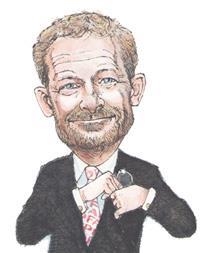Danica Pension, Denmark’s second-biggest commercial pensions provider, reported 41% growth in premiums in its Swedish business in 2015 from the year before, and a 14% rise in Norway.
Per Klitgård, chief executive at Danica, said: “Total premiums rose 10%, primarily as a result of higher levels of activity in Sweden and Norway, where the collaboration with Danske Bank is increasingly paying off.”
Figures from its annual report showed total premiums for the group rose to DKK29.6bn (€4bn) in 2015 from DKK26.8bn.
Danica attributed the extra business in Sweden not only to “intensified collaboration” with its parent, Danske Bank, but a positive trend in its cooperation with brokers and labour market pensions.
Investment returns were lower than last year, though the company said returns for its Danica Balance market-rate product had become stronger later in the year.
The full-year return on the non-guaranteed products Danica Balance and Danica Link was between 3.1% and 10.3%, depending on the age of customers.
In 2014, these products returned 9.4% on average.
Meanwhile, the return on the Danica Traditionel guaranteed with-profits product was 1% before an adjustment for additional provisions and 5.1% after adjustment.
The year before, this product had returned 14% before adjustments and 7.2% afterwards.
The pension provider said it was continuing to implement the new investment strategy it adopted in 2014, a key element of which is to invest directly in Danish and Nordic companies.
So far, it has invested more than DKK4bn in this way, and these investments are expected to reach DKK15bn over the coming years, Danica said.
It also said it had developed a new, improved Danica Balance product, introduced to new customers in January.
Commenting on investment returns in the Danica Balance market-rate product, Anders Svennesen, Danica’s CIO, told IPE: “We were very glad to see that in the second half we were in the top three, and this is the momentum we want to keep up.”
In the first quarter, these investment returns had not compared so well with those of peers in the Danish pension sector, he said, because some rivals managed to make significant wins through Danish equities and exposure to the US dollar.
“There were pension funds having large exposures in those, that closed the positions in the first three months,” he said.
“If you hit that one right, no one had the chance to beat you.”
However, Danica’s strategy was not focused on taking such short-term risks, he said.
Danica’s total assets grew to DKK368bn by the end of 2015 from DKK358bn the year before.




















No comments yet